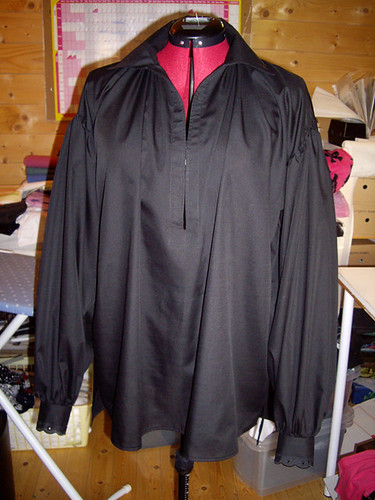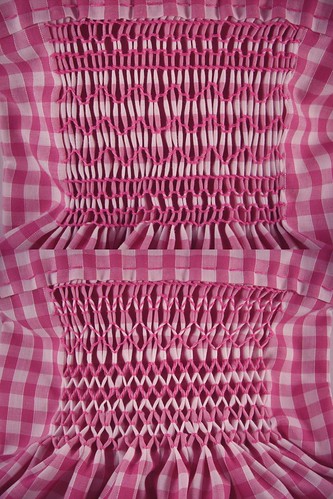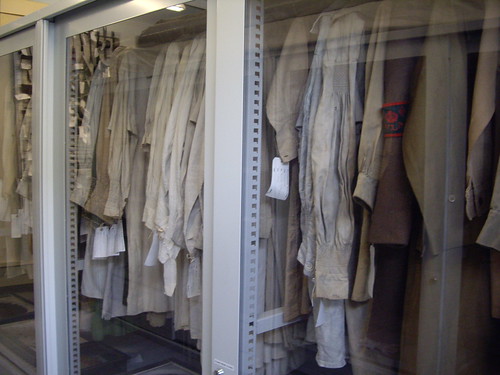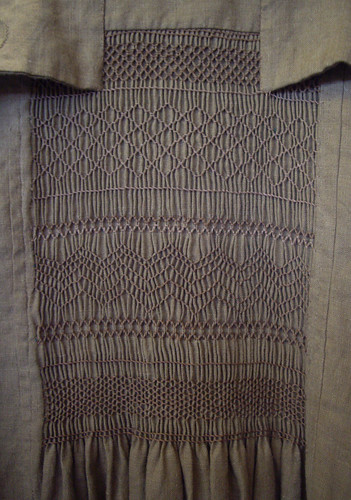Today, rather than sewing something I actually need, like a dress for work or a winter coat, I decided to make a pirate shirt. As you do. (If you’re me.)
The pattern is Simplicity 4923, view C. I made a size Medium.
The fabric is just a plain black polycotton, and the cuffs are trimmed with flat broderie anglais lace – all from my stash. The collar size and length are just right, but the sleeves are absolutely ridiculous – even by 18th century standards. I could easily shorten them by four or five inches and they’d still be enormous!
Next time I think I’d like to make one in a nice soft white linen. I’ve found the perfect linen buttons too – just like the ones on the smocks at MERL. In fact, I might employ a technique I saw on a number of the MERL smocks, and make some horizontal tucks in the sleeves to shorten them.
I also want to have a look at The Cut of Men’s Clothes by Norah Waugh, and see what I want to do about the front fastening. I don’t really want to add eyelets and ribbon, so I might go for thread loops and little buttons. I should have done that on the sleeves, but for the sake of convenience (and maybe a touch of laziness) I went for snap fasteners instead.
There’s another goth night in a couple of weeks, so I plan to wear this with Paul’s old leather trousers. If I have time, I might make a waistcoat to go over the top. I’ve still got a piece of black and silver brocade that should be just about big enough.







